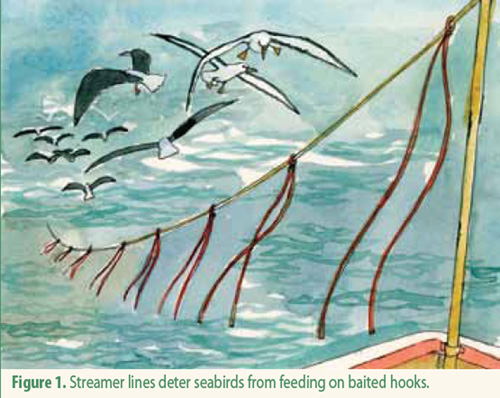Taiwanese longline fishers attending a two-day workshop this week in Kaohsiung, Taiwan are considering best practices for reducing fishing’s impact on seabird populations, especially albatrosses. The workshop aims to provide demonstrations of practical ways to mitigate the catch of these threatened birds, along with a discussion of how to safely implement techniques. Expert presenters are addressing the importance of collecting and reporting data so that fishery managers have a better understanding of the impact fishing has on seabird populations.
The Taiwanese Fisheries Agency, BirdLife International’s Global Seabird Programme and the Chinese Wild Bird Federation are co-hosting the workshop, which the International Seafood Sustainability Foundation (ISSF) has supported with a US$40 000 grant (click here).
“There are well-defined and proven methods to reduce the rate at which longline vessels catch seabirds, and it is vitally important that we help longline fleets understand how best to put these techniques into practice,” ISSF President Susan Jackson said. “This workshop is an example of how public-private partnerships can benefit the greater marine environment without harming the ability of fishers to remain economically viable.”
Fishing data show that Taiwanese vessels account for a major proportion of longline vessels in areas overlapping with albatross foraging and breeding grounds. Most of these vessels are targeting Albacore Thunnus alalunga, with fish typically destined for canneries.

Jackson added, “Regional fishery management organizations [RFMOs] have strengthened measures to address seabird bycatch, and as these requirements come into effect over the next year, longline fleets will need support as they take responsibility for improving their practices. Supporting the BirdLife Global Seabird Programme is part of ISSF’s commitment to engaging and working with longline tuna fishing fleets.”
“Tuna management bodies in the Atlantic, Indian and southern Pacific Oceans now require longline vessels south of 25°S (30°S in the Pacific) to use at least two of the following measures: bird-scaring lines, which keep birds away from the hooks; night setting when many birds are less active; or branchline weighting in order to sink hooks more quickly out of the reach of seabirds.”
With thanks to Charlie Patterson for information.
John Cooper, ACAP Information Officer, 13 November 2013

 English
English  Français
Français  Español
Español